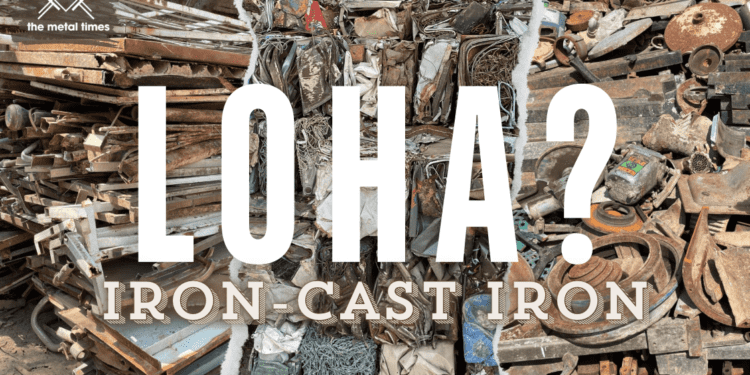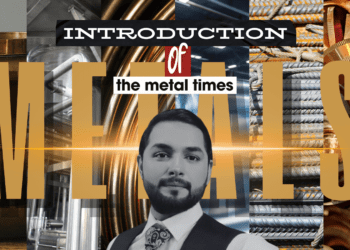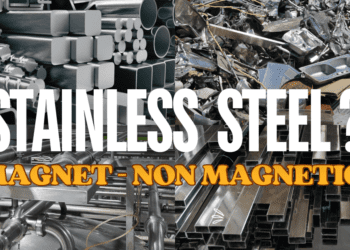What is Iron? Understanding the Basics and Importance of Iron in Everyday Life
Iron, or “loha” in Urdu, is one of the most essential and commonly used metals in the world. From the skyscrapers we see in modern cities to the simplest tools in our homes, iron has shaped human civilization in countless ways. If you’re interested in learning everything about iron, you’re in the right place. In this article, I’ll guide you through the essential details of iron, from its characteristics to its uses, and why it remains a metal of utmost importance. And if you prefer watching videos, I’ve explained these concepts on my YouTube channel as well!
Join our: WhatsApp Channel
The Basics of Iron
Iron is a chemical element with the symbol Fe, derived from its Latin name ‘ferrum.’ It is the most abundant element on Earth by mass and makes up about 5% of the Earth’s crust. It is widely used in its pure form and in combination with other materials (as alloys) to make various tools, machines, and structures.
Properties of Iron
Iron has several characteristics that make it a widely used metal. Here are some key properties:
- Magnetic: One of the unique features of iron is that it is magnetic. This makes it useful in various applications, from electric motors to transformers.
- Ductile and Malleable: Iron can be easily shaped and molded without breaking. This flexibility allows it to be used in construction, machinery, and even decorative arts.
- Rusts Easily: One of the downsides of iron is its tendency to rust when it comes into contact with water and oxygen. However, by mixing iron with other metals, like chromium and nickel, it can be made into stainless steel, which is resistant to rust.
Also Check :Iron | Complete Details
Types of Iron and Iron Alloys
Iron can be classified into various types depending on its carbon content and the processes it undergoes. The most common forms are:
- Wrought Iron: A very low-carbon iron, known for its malleability and toughness. It is often used in decorative items like gates, fences, and furniture.
- Cast Iron: Contains 2-4% carbon, making it brittle but very strong. It is commonly used in pipes, engines, and construction components.
- Steel: By adding carbon to iron, you get steel, which is one of the strongest materials used in construction and manufacturing. Steel is crucial in building bridges, buildings, cars, and appliances.
- Pig Iron: This is the basic raw iron that is produced in a blast furnace. It is brittle and is usually used as an intermediate product for making steel.
Applications of Iron
Iron plays a critical role in our everyday lives. Here are some common applications:
- Construction: Iron is the backbone of the construction industry. Steel, made from iron, is used to build everything from skyscrapers to homes. Without iron, modern infrastructure would not exist.
- Transportation: Iron is essential in the automotive industry. Cars, trucks, ships, and even airplanes use steel, which is made from iron.
- Industrial Equipment: From farming tools to heavy machinery in factories, iron is a key component of equipment used in agriculture, mining, and manufacturing.
- Household Appliances: Many household items, such as refrigerators, washing machines, and ovens, contain steel and iron components.
- Medical Uses: Did you know that iron is essential for human health too? It’s a key element in hemoglobin, the protein in red blood cells that carries oxygen throughout the body. Without enough iron in our diet, we would suffer from anemia.
Must Read :Stainless Steel | Complete Details
How Iron is Extracted and Processed
Iron is mined from iron ore, which is found in the Earth’s crust. The most common ores are hematite and magnetite. The iron is extracted through a process known as smelting, where it is heated at high temperatures in a blast furnace to separate it from impurities. After extraction, the raw iron can be further processed into different types of steel or used as cast iron.
Challenges in Using Iron
Although iron is incredibly useful, it has some drawbacks. One of the biggest challenges is its tendency to rust. Rust weakens the metal, making it less durable. To overcome this, industries often use protective coatings or mix iron with other metals to produce rust-resistant alloys, like stainless steel.
Another challenge is the environmental impact of iron production. Mining and processing iron require a lot of energy, which can lead to pollution. However, industries are working towards greener technologies to reduce the environmental footprint of iron production.
Click Here For Latest Scrap Metal Rates
Learn More About Iron on Our YouTube Channel :
If you’re intrigued by iron and its fascinating role in shaping our world, I’ve covered these topics and more on my YouTube channel. In my videos, I explain everything from the science behind iron to its real-world applications. Whether you’re interested in learning about the scrap metal business or the different types of metals, I’ve got you covered with in-depth, easy-to-understand content.
Follow Us:
• YouTube – / @themetaltimes
• Facebook – / themetaltimes
• Twitter – / themetaltimes
• Instagram – / the_metaltimes
• TikTok – / themetaltimes
• Linkedin – / themetaltimes
• WhatsApp – https://wa.me/923331260661
• WAChannel – https://whatsapp.com/channel/0029Vad1…
Frequently Asked Questions (FAQs) About Iron :
1. What is iron?
Iron is a chemical element and one of the most commonly used metals in the world. It is essential for construction, manufacturing, and even health.
2. What is the symbol of iron?
Iron’s symbol is ‘Fe,’ which comes from its Latin name, ‘ferrum.’
3. Where is iron found?
Iron is found in the Earth’s crust as iron ore, typically in the form of hematite or magnetite.
4. What is iron used for?
Iron is primarily used to make steel, which is used in construction, transportation, and various machinery. It’s also used in household appliances and medical applications.
5. Is iron magnetic?
Yes, iron is magnetic, which makes it valuable in applications like electric motors and transformers.
6. How is iron different from steel?
Steel is an alloy made by adding carbon to iron, which increases its strength, making it more durable and versatile than pure iron.
7. What is cast iron?
Cast iron is a type of iron that contains a higher carbon content, making it strong but brittle. It is often used in pipes and heavy machinery.
8. Does iron rust?
Yes, iron rusts when it reacts with oxygen and moisture. To prevent rusting, iron can be coated or alloyed with other metals to create stainless steel.
9. How is iron extracted?
Iron is extracted from iron ore through a process called smelting, where it is heated at high temperatures in a blast furnace.
10. Why is iron important for our health?
Iron is essential for making hemoglobin, a protein in red blood cells that carries oxygen throughout the body. Lack of iron can cause anemia.
Conclusion :
Iron is a metal that has significantly impacted human history and continues to be a vital resource in modern industries. From everyday household items to major industrial applications, iron plays a central role in making our world work. If you’re curious to dive deeper into this fascinating metal, be sure to check out my videos on YouTube, where I explain all of this in greater detail!




















